Time
[7][11][12] Nevertheless, diverse fields such as business, industry, sports, the sciences, and the performing arts all incorporate some notion of time into their respective measuring systems.To avoid a circular definition,[16] time in physics is operationally defined as "what a clock reads", specifically a count of repeating events such as the SI second.Events like particle collisions, supernovas, or rocket launches have coordinates that may vary for different observers, making concepts like "now" and "here" relative.Instead, the spacetime interval is calculated and classified as either space-like or time-like, depending on whether an observer exists that would say the events are separated by space or by time.In quantum mechanics, time is treated as a universal and absolute parameter, differing from general relativity's notion of independent clocks.[27] An Egyptian device that dates to c. 1500 BC, similar in shape to a bent T-square, measured the passage of time from the shadow cast by its crossbar on a nonlinear rule.[29] The most precise timekeeping device of the ancient world was the water clock, or clepsydra, one of which was found in the tomb of Egyptian pharaoh Amenhotep I.The ancient Greeks and the people from Chaldea (southeastern Mesopotamia) regularly maintained timekeeping records as an essential part of their astronomical observations.Initially, the term was used to refer to the marine chronometer, a timepiece used to determine longitude by means of celestial navigation, a precision first achieved by John Harrison.SI defines the second as 9,192,631,770 cycles of the radiation that corresponds to the transition between two electron spin energy levels of the ground state of the 133Cs atom.[41] Similarly, in other ancient cultures such as those of the Mayans, Aztecs, and Chinese, there were also beliefs in cyclical time, often associated with astronomical observations and calendars.[42] These cultures developed complex systems to track time, seasons, and celestial movements, reflecting their understanding of cyclical patterns in nature and the universe.However, Augustine ends up calling time a "distention" of the mind (Confessions 11.26) by which we simultaneously grasp the past in memory, the present by attention, and the future by expectation.[58] These questions lead to realism vs anti-realism; the realists believed that time is a fundamental part of the universe, and be perceived by events happening in a sequence, in a dimension.[68] With Kant, neither space nor time are conceived as substances, but rather both are elements of a systematic mental framework that necessarily structures the experiences of any rational agent, or observing subject.Kant thought of time as a fundamental part of an abstract conceptual framework, together with space and number, within which we sequence events, quantify their duration, and compare the motions of objects.We are able to remember the past and project into the future – we have a kind of random access to our representation of temporal existence; we can, in our thoughts, step out of (ecstasis) sequential time.[60] In 5th century BC Greece, Antiphon the Sophist, in a fragment preserved from his chief work On Truth, held that: "Time is not a reality (hypostasis), but a concept (noêma) or a measure (metron)."[86] In non-relativistic classical mechanics, Newton's concept of "relative, apparent, and common time" can be used in the formulation of a prescription for the synchronization of clocks.Events seen by two different observers in motion relative to each other produce a mathematical concept of time that works sufficiently well for describing the everyday phenomena of most people's experience.Einstein resolved these problems by invoking a method of synchronizing clocks using the constant, finite speed of light as the maximum signal velocity.Because the outside universe appears flattened to the spaceship, the crew perceives themselves as quickly traveling between regions of space that (to the stationary observer) are many light years apart.The horizontal direction indicates distance (only one spatial dimension is taken into account), and the thick dashed curve is the spacetime trajectory ("world line") of the observer.Notice that with the change from a Newtonian to a relativistic description, the concept of absolute time is no longer applicable: events move up and down in the figure depending on the acceleration of the observer.So entropy tends to increase in either direction, and our current low-entropy universe is a statistical aberration, in a similar manner as tossing a coin often enough that eventually heads will result ten times in a row.Travelling backwards or forwards in time has never been verified as a process, and doing so presents many theoretical problems and contradictive logic which to date have not been overcome.A central problem with time travel to the past is the violation of causality; should an effect precede its cause, it would give rise to the possibility of a temporal paradox.[91] The brain's judgment of time is known to be a highly distributed system, including at least the cerebral cortex, cerebellum and basal ganglia as its components.One particular component, the suprachiasmatic nuclei, is responsible for the circadian (or daily) rhythm, while other cell clusters appear capable of shorter-range (ultradian) timekeeping.A sequence of events that includes the time along with place or location information to describe a sequential path may be referred to as a world line.

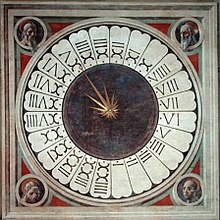
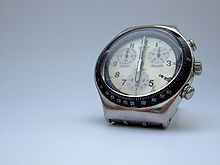


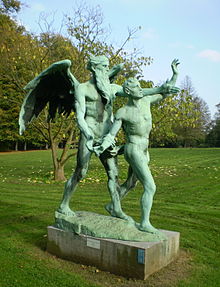
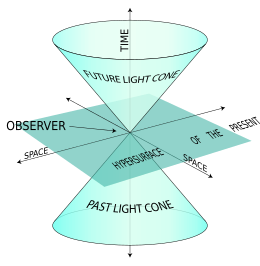
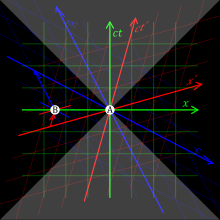

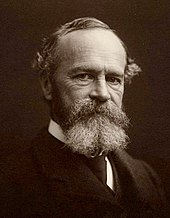
Time (magazine)Time (disambiguation)Time (music)PresentFutureEternityof the worldArchaeologyChronologyHistoryHorologyMetrologyPaleontologyFuturologyPhilosophyPresentismEternalismFatalismCreationEnd timeDay of JudgementImmortalityAfterlifeReincarnationKalachakraMeasurementStandardsISO 8601MetricHexadecimalNaturalismChronobiologyCosmogonyEvolutionRadiometric datingUltimate fate of the universeTime in physicsMotionSpacetimeTime travelexistenceirreversiblemeasurementssequenceeventsquantifyrates of changequantitiesmaterial realityconsciousexperiencedimensionthree spatial dimensionsuniverseBig Bangheat deathBig Crunchcyclic modelphilosophy of eternalismphysical quantitiesInternational System of UnitsInternational System of Quantitiesunit of timesecondelectronic transitionfrequencycaesiumGeneral relativitydilatedblack holestechnologistsnavigationastronomyeconomic valuetime is moneyawarenesshuman life spanscarpe diemcircularitymeasuring systemsGlobal Positioning SystemCoordinated Universal Timemean solar timevelocityoperationally definedSI secondparticle collisionssupernovasrocket launchesspacetime intervalMichelson–Morley experimentcausal relationproblem of timesand timerchronometrycalendarclock dialtime zonedaylight saving timePaleolithicLunar calendarslunar monthsintercalationLunisolar calendarsepagomenalJulius CaesarRoman worldsolar calendarJulian calendarsolsticesequinoxesPope Gregory XIIIGregorian calendarFrench Revolutiondechristianization of FranceFrench Republican CalendarduodecimalsundialHistory of timekeeping devicesdevicesT-squaregnomonlocal timeancient worldwater clockAmenhotep I